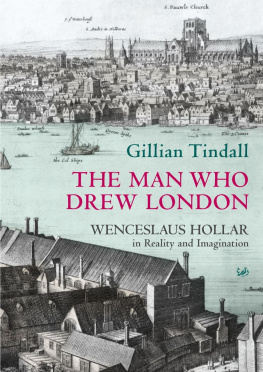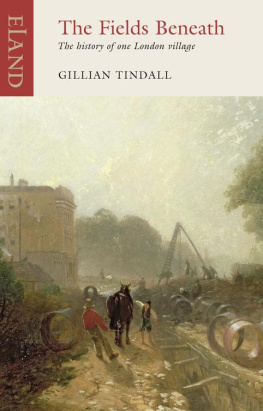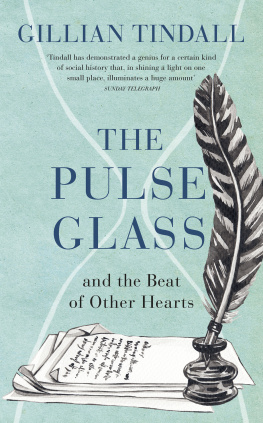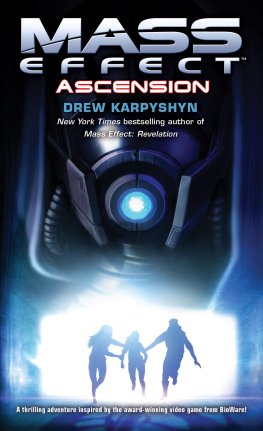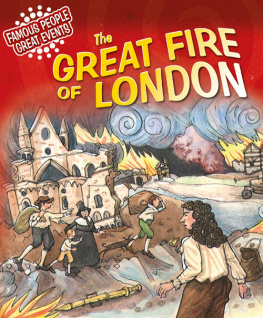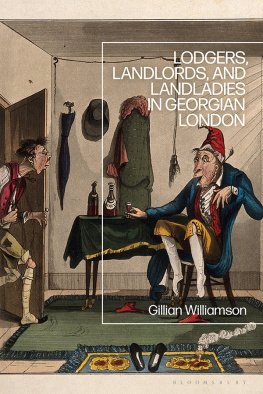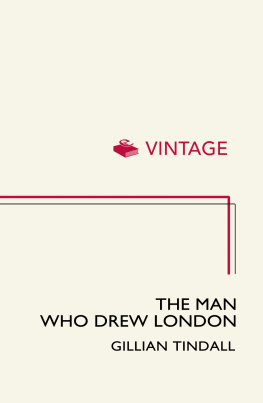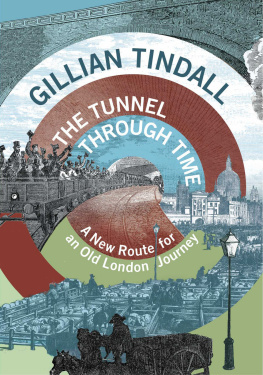Gillian Tindall - The Man Who Drew London
Here you can read online Gillian Tindall - The Man Who Drew London full text of the book (entire story) in english for free. Download pdf and epub, get meaning, cover and reviews about this ebook. year: 2013, publisher: Random House, genre: Detective and thriller. Description of the work, (preface) as well as reviews are available. Best literature library LitArk.com created for fans of good reading and offers a wide selection of genres:
Romance novel
Science fiction
Adventure
Detective
Science
History
Home and family
Prose
Art
Politics
Computer
Non-fiction
Religion
Business
Children
Humor
Choose a favorite category and find really read worthwhile books. Enjoy immersion in the world of imagination, feel the emotions of the characters or learn something new for yourself, make an fascinating discovery.
- Book:The Man Who Drew London
- Author:
- Publisher:Random House
- Genre:
- Year:2013
- Rating:5 / 5
- Favourites:Add to favourites
- Your mark:
- 100
- 1
- 2
- 3
- 4
- 5
The Man Who Drew London: summary, description and annotation
We offer to read an annotation, description, summary or preface (depends on what the author of the book "The Man Who Drew London" wrote himself). If you haven't found the necessary information about the book — write in the comments, we will try to find it.
The Man Who Drew London — read online for free the complete book (whole text) full work
Below is the text of the book, divided by pages. System saving the place of the last page read, allows you to conveniently read the book "The Man Who Drew London" online for free, without having to search again every time where you left off. Put a bookmark, and you can go to the page where you finished reading at any time.
Font size:
Interval:
Bookmark:
Contents
About the Author
Gillian Tindall is the author of two short-story collections, six novels, and five other works of non-fiction. Both her novels and her non-fiction work have drawn inspiration from a highly developed sense of place and history. At various times, Bombay, Paris and rural France have all formed part of her essential subject matter; but London remains for her a source of enduring and inexhaustible interest. She lives in London with her husband.
List of Illustrations
All, except the illustrations 26 and 29 are engravings, and all by Hollar
Section of the Long View showing old London Bridge
Herald Angel from the Long View
View of Prague
Meyssenss portrait of Hollar with his tools
Henry van de Burg, after Meyssens
Drawing said to be after Rembrandt
Samples of Hollars small pictures of women
Near Andernach
Rdesheim
View of Greenwich
The courtyard of Arundel House
Albury, with the Arundel family taking a walk
Execution of Lord Strafford (detail)
Spring, with a view over Arundel House gardens
Summer, with a view from Arundel House up the river
Winter, with Cornhill in the background
One of Hollars muffs
Spring, with what may be Tart Hall in the background
Antwerp Cathedral
From the Arundel Collection: insects and shells
This is a good cat that does not steal
The rooftops of Windsor Castle
Supposed to be Margaret Tracy
William Dugdale
Covent Garden
Old St Pauls from Bankside section of the Long View
The Hollow Tree at Hampstead Heath
Old St Pauls interior, the nave
Part of the Restoration procession
The one surviving sheet of Hollars Great Map
Whitehall from the waterside, Lambeth opposite
Thomas Hobbes (detail), after J.-B. Caspar
The Waterhouse, Islington
London burning
The post-Fire map of London
Albury, the river Tillingbourne
Part of the pirates attack
Tothill Fields
Tomb of Henry VII in Westminster Abbey
New Palace Yard, Whitehall
Lambeth Palace and St Marys, from the river
Herald Angel from the Long View
LONDON
Wenceslaus Hollar in Reality and Imagination

GILLIAN TINDALL

Everything exists,
And not one smile nor tear,
One hair, one particle of dust, not one
Can pass away.
(William Blake)
plankes and lighter things swimme, and are preserved, whereas the more weighty sinke and are lost. And as with the light after Sun-sett at which time, clear in so many degrees etc; comes by and by the crepusculum then totall Darkness. In like manner it is with matters of Antiquities. Men thinke because every body remembers a memorable Accident shortly after tis done twill never be forgotten, which for want of registering at last is drowned in Oblivion.
(John Aubrey)
the desire of transmitting virtue to posterity does not torment the minds of the living, and what we read of the dead seems a fable, so different is the present practice of the world.
(Mary Evelyn)
Authors Introduction, and Thanks
More than thirty years ago I bought for two pounds and ten shillings, I believe a seventeenth-century print of one of Hollars miniature Islington views. I bought it because I liked it and because I enjoyed thinking that this rugged, stream-crossed landscape was what lay beneath the streets about the Angel tube station. Hollars name had, till then, been unknown to me, though I began to realise that I had seen that discreet signature on other pictures of London, that indeed I had internalised his views of Stuart London so that they had become my own images of the city we have lost.
A few years later, lighting on a poster-sized reproduction of a cats head rendered in exquisite detail, I bought it as a decoration for a playroom. Only after I had got it home did I notice that this, too, was signed W. Hollar.
After that, charmed by an artist whose etching skills extended from fur and lace to the Gothic shadows of old St Pauls, and the depiction of the whole of London town in inspired birds-eye focus, I learnt more about him. I realised that I might one day want to write about him: but at the same time I came to know that, though there have been some excellent biographical studies of him by art historians in conjunction with surveys of his work, attempting a full-length biography in the usual sense was not a realistic option.
We are lucky to have a large quantity of his surviving work, often in multiple copies, most of it dated or datable, which gives us some idea of where he was in Europe at what time. From this and from other evidence we know that he was present on occasions for which there is other and plentiful historical data. There exist three of his own handwritten letters, and his name crops up fleetingly in the letters and diaries of others. The Registers in his native Prague and in London, where he spent a large part of his life, provide a little basic evidence of his origins, his marriages, his hopeful petitions to Charles II and his death. In addition, we have brief testimony from three men who knew him personally and from one other who was told about him. It is on their scant and precious sentences that the present story of his life is strung.
Strung, because the material for a conventional documentary account of his life is not there. Hollars religious affiliations are perpetually disputed; the number and destinies of his children are conjectural; his wives are mere names. My solution has been to interleave the straightforwardly factual sections of this book with passages in which I have adopted a number of lost, obscure and therefore imagined voices that are there to convey their own perceptions of Hollar and to shed further light on the world that surrounded him.
These fictionalised passages are not romanticised: I have imagined nothing for my characters that is not either likely or hinted at already in the scraps of evidence we have. Through the medium of apparent fiction is imparted authentic information about the places in which Hollar lived and worked and about the better-documented people of the day whose paths intersected with his. Neither imaginative constructions nor purely factual sections are written to stand on their own, but rather to complement each other.
My other object, apart from the elusive central figure himself, is London. Hollar drew many other places, both within England and on the Continent, but I have chosen to concentrate on the life and times of the city he made peculiarly his own and which he has bequeathed to us.
On a few occasions it has seemed that some details (of the recoverable location of a house, say, or the exact dating of a letter), though absorbing to me, are perhaps more than some readers want: I have therefore put such points in the Notes at the end of this book.
Dwelling as he did on the fringes of more illustrious lives, it has been Hollars fate to be inaccurately represented. For decades, the Dictionary ofNational Biography entry on him has been faulty (though I understand this is being remedied in a new edition) and a rogue reference to him in an otherwise respected work of recent scholarship labels him as Dutch. I am, however, much indebted to several high-quality studies of his life and work (see the Bibliography) and particularly to Richard Penningtons Descriptive Catalogue which, in spite of one or two oddities, is an indispensable work of reference for anyone interested in Hollar today.
Next pageFont size:
Interval:
Bookmark:
Similar books «The Man Who Drew London»
Look at similar books to The Man Who Drew London. We have selected literature similar in name and meaning in the hope of providing readers with more options to find new, interesting, not yet read works.
Discussion, reviews of the book The Man Who Drew London and just readers' own opinions. Leave your comments, write what you think about the work, its meaning or the main characters. Specify what exactly you liked and what you didn't like, and why you think so.

